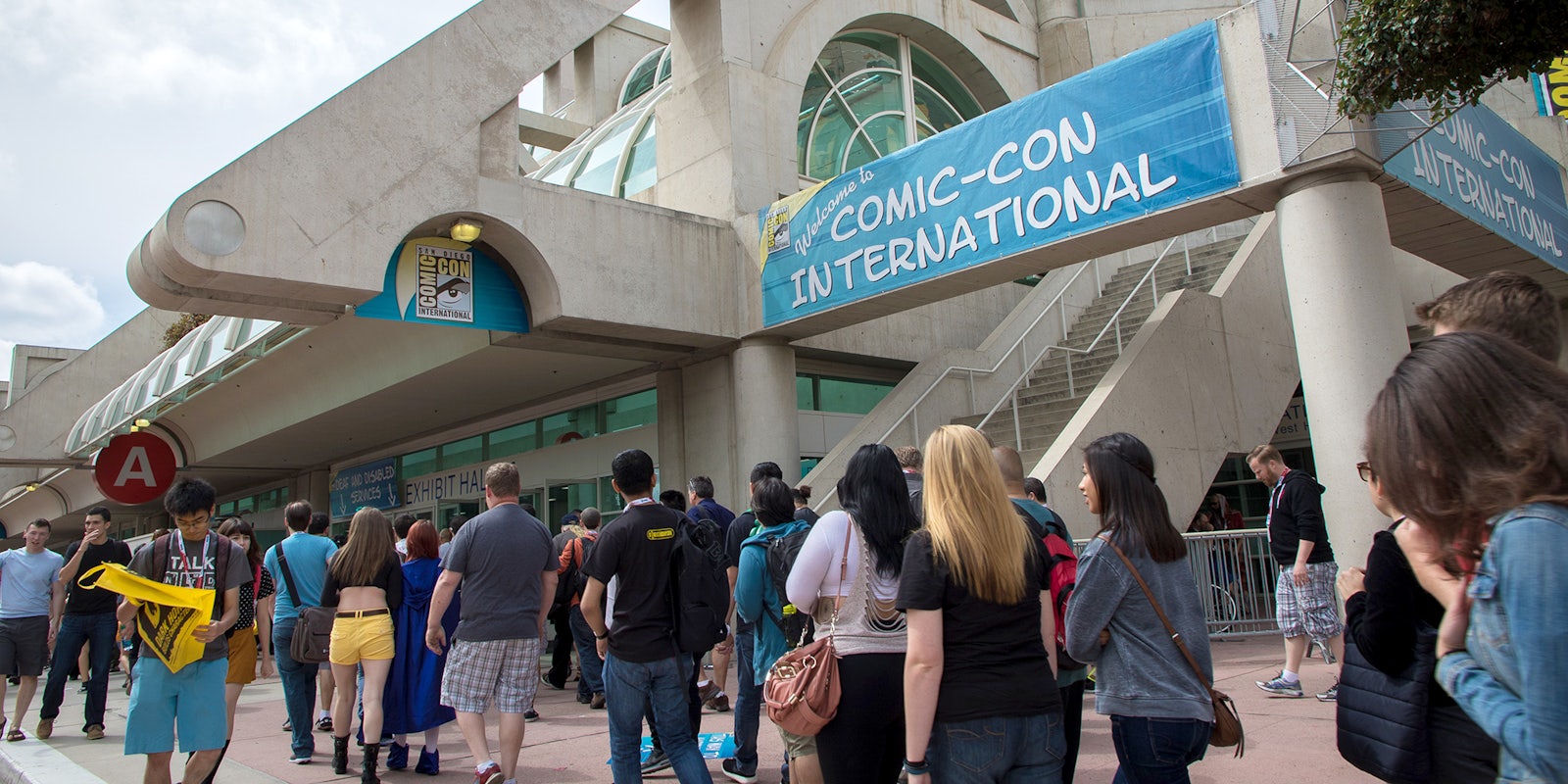Decoding Fandom is a weekly column that dives deep into the world of fan culture and runs on Saturdays in the Daily Dot’s web_crawlr newsletter. If you want to get this column a day before we publish it, subscribe to web_crawlr, where you’ll get the daily scoop of internet culture delivered straight to your inbox.
Gathering in public is a central component of community-building, which is why conventions are so important to fandom. The precise lineage of fan cons is contested, but we do know a dime store novel publisher put on a convention for readers all the way back in 1889. Then there was the costumed, sci–fi-themed fundraiser held at Royal Albert Hall in 1891. However, many consider the first modern sci-fi conventions to be those held in the 1930s, culminating in the World Science Fiction Convention (now WorldCon) in 1939.
In the present day, one of the most famous fan conventions is San Diego Comic-Con (SDCC). Founded in 1969 by a group of teenage boys (and two adults) who loved comics, the con has since grown into a hugely attended, money-making enterprise. (The event brings in an estimated $160 million for the city each year.)
Despite its now gigantic size, Comic-Con is still the blueprint for many cons around the world. Though conventions focused on comics or comic-based media remain prominent, other common subjects include anime, sci-fi, fantasy, horror, and cons based on specific films or series. These events usually include panels with creators, special screenings, meet and greets, booths where fans can display their art (known as Artist Alley), and, perhaps most famously, cosplay.
The earliest recorded instance of cosplay—wearing fan-made costumes representing fictional characters—occurred in 1939 at the first WorldCon when two fans arrived wearing outfits inspired by an H.G. Wells film. (The term “cosplay” wasn’t coined until 1984.) Since then, cosplay has become a worldwide phenomenon and digital communities have coalesced around the practice. Many fans share their cosplay online, explaining how they created the costumes and giving tips to other cosplayers. Black fans and fans of color have worked to make their contributions visible on social media, changing the face of cosplay in the process.
You might assume that the diversity of fan communities online means that fan conventions aren’t as significant as they once were, but that’s not the case. In fact, fan conventions are a place where digital and ‘IRL’ worlds collide. Here’s an example. In 2016, the Bury Your Gays Trope came to a head with the death of Lexa, a popular lesbian character on The 100. Her death sparked massive fan outrage online, resulting in a worldwide fan campaign called LGBT Fans Deserve Better.
In 2017, fans organized ClexaCon, the first multi-fandom convention for queer women and non-binary people. The event was created as a result of the outcry following Lexa’s death and to celebrate positive LGBT representation. As with the conventions that came before it, ClexaCon celebrates the creativity, community, and unadulterated excitement of fans.
Why it matters
ClexaCon began as an online movement and grew into an in-person gathering, a journey that describes the trajectory of many communities today. Fan conventions are far from relics of a bygone era, and instead provide a space for fans to express themselves and congregate in the flesh.
Cons give fans unfettered access to their favorite media and celebs, (theoretically) unmediated by screens. Sure, you can now watch a Comic-Con panel from the comfort of your home, but asking Mads Mikkelsen to choke you during a photoshoot? That’s an in-person-only experience.



